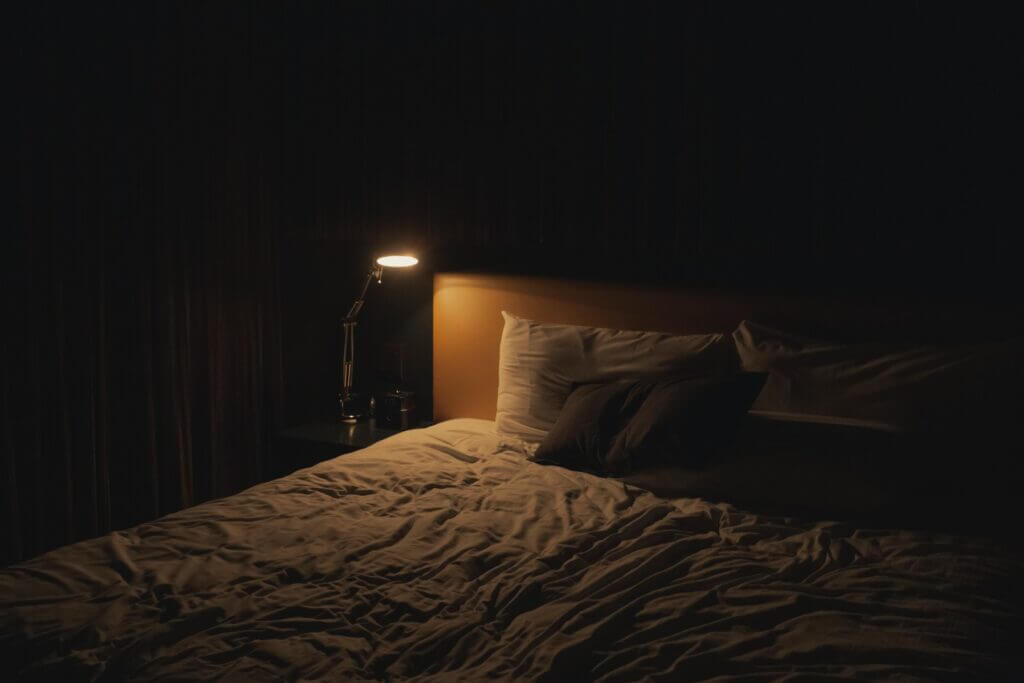Mold is a type of fungus that grows in damp, warm environments. If left unchecked, it can spread and release spores into the air that can cause allergy symptoms and other health issues for some people. Mold under the bed is particularly concerning because of its proximity to where you sleep. But don’t panic – with the right prevention and removal strategies, you can banish mold for good.
Mold needs moisture to grow. Places like under beds can provide ideal conditions for mold if moisture gets trapped there. Sources of moisture that allow mold to grow under beds include:
- Leaks from plumbing or roofs
- High humidity
- Spills that aren’t cleaned up promptly
- Condensation from windows or walls
Signs that you may have mold under the bed include:
- Visible mold growth on the underside of the mattress or baseboards
- Musty odor
- Stains on the carpet around or under the bed
- Peeling paint or warped surfaces under the bed
- Respiratory issues like wheezing, coughing, or congestion that improve when away from the bedroom
Exposure to the spores and cells released by mold growth can cause a range of health issues. People with asthma or allergies may be particularly susceptible. Potential health risks associated with mold exposure include:
- Worsening of asthma symptoms
- Development of new asthma cases in children
- Respiratory tract symptoms like wheezing and difficulty breathing
- Runny nose, eye irritation, coughing, congestion
- Rashes or irritation on skin
- Headaches, fatigue, and nausea
If you suspect you may have a mold problem under your bed, it’s important to take action to address it promptly.
Mold Prevention Strategies
Preventing mold involves controlling moisture and keeping the environment inhospitable to mold growth. Here are some key prevention strategies:
Maintain Proper Ventilation
Good air circulation prevents the warm, stagnant conditions that mold thrives on. Open windows regularly when the weather allows. Make sure vents are clear and HVAC systems are properly maintained. Use fans to keep air moving in the bedroom.
Control Moisture Levels
Use dehumidifiers or air conditioners to keep indoor humidity below 50%. Avoid overwatering indoor plants. Quickly fix any leaks and dry out water damage.
Clean and Inspect Regularly
Vacuum and wipe down surfaces around and under the bed frequently. Look for signs of mold and address them immediately. Clean spills right away.
Use Mold-Resistant Materials
Choose wood, tile, vinyl, metal and other materials that resist mold growth for items like bed frames and flooring in the bedroom.
Address Underlying Moisture Problems
Identify and repair leaks, improve ventilation in damp areas, insulate cold surfaces to reduce condensation, and make other fixes to tackle excess moisture at the source.
Ongoing prevention is key to avoiding mold under beds. Be vigilant and don’t allow moisture issues to linger.
Mold Removal Methods
If you find mold under your bed, you’ll need to remove it completely to protect your health. Here are some tips:
DIY Mold Removal
For small areas of mold growth under 10 square feet, you may be able to remove it yourself. Protect yourself by wearing goggles, gloves, and a respirator mask. Clean the area using detergent and water, or an antimicrobial cleaner. Dry thoroughly afterwards. HEPA vacuuming and gently scrubbing with a soft brush can help remove mold from porous materials like wood.
Professional Mold Removal
For large areas of mold growth, or if you have health issues that make DIY removal unsafe, call in professionals. Mold remediation companies have training and tools to remove mold and dry out affected areas thoroughly. They can also assess how far mold may have spread in walls or elsewhere and take necessary remediation steps. Professional mold removal may be necessary for people with mold allergies or asthma.
Take Safety Precautions
Whether doing it yourself or using professionals, take precautions when cleaning up mold. Limit your exposure and keep mold spores from spreading further by sealing off the affected area with plastic sheeting. Wear protective gear. Carefully dispose of any materials that cannot be sufficiently cleaned. Promptly wash any clothing that may have mold on it.
Be sure to fully fix the underlying moisture issue that allowed the mold to grow in the first place. Otherwise, it will likely recur in that area again.
Preventing Mold Recurrence
Eliminating existing mold under the bed is only half the battle. Preventing mold from coming back requires vigilance and ongoing moisture control.
Continue Mold Prevention Strategies
Keep up with the ventilation, dehumidification, cleaning and other moisture-controlling steps outlined earlier. Make them part of your regular household routine.
Address Any Underlying Moisture Problems
Monitor areas near leaks, condensation issues or previous water damage for any signs of returning dampness. Make any needed repairs promptly.
Monitor for Signs of Mold
Inspect under and around your bed regularly for odors, staining, or visible mold growth. Catch any signs of returning mold early before it can become a big issue again.
Stop mold in its tracks by creating a bedroom environment that is dry, clean and inhospitable to mold growth. Proper moisture control and quick action at the first sign of mold will help safeguard the health of you and your family. Stay vigilant, and you can successfully banish mold from under the bed and keep it away for good.




